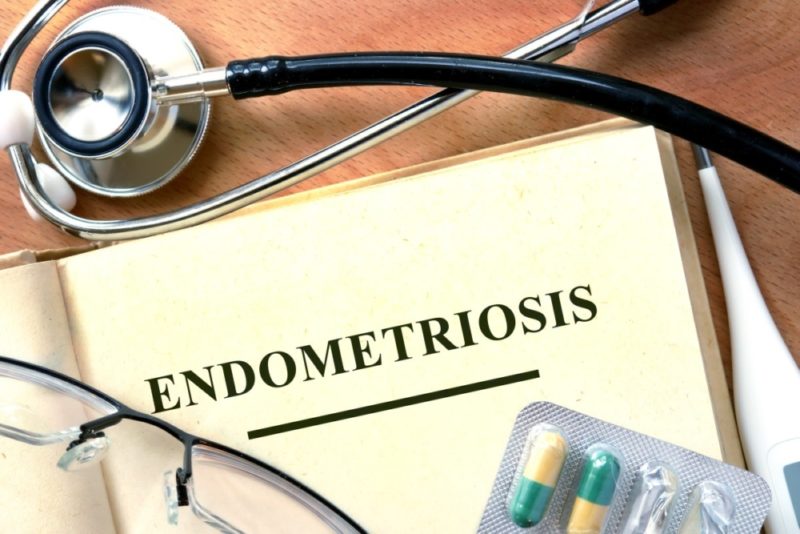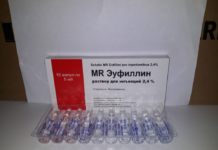Endometriosis is an unpleasant disease that is widespread in gynecology. It manifests itself in different ways: for someone it is intense, and for some with barely noticeable symptoms. But every woman who has encountered this pathology is worried whether it is possible to become pregnant with endometriosis.
Material Content:
What is endometriosis?
Endometriosis is a pathology characteristic of the female half of humanity and affects its representatives in the childbearing period. The genital type of disease is localized in the uterus and fallopian tubes, while extragenital also covers other organs. The disease is especially due to the fact that both its types are capable of developing in a woman at the same time.
In healthy girls, the endometrium, which is lined with the inner surface of the uterus, is rejected and excreted at the time of the menstrual cycle. With endometriotic lesions, small particles of the endometrium move, fall into the muscle tissue of the uterus or move through the lymphatic system. In this case, any organ can be hit, because such particles are capable of settling anywhere. In these areas, the proliferation of endometrial tissues, their swelling and bleeding is recorded. The blood that is not able to go outside accumulates, soreness appears, adhesions develop.
Forms and degrees of disease
Based on how the growth of the endometrium in the uterus occurred, and to what extent damage to the internal organs occurred, several stages of the pathological process are distinguished:
- 1st stage.It is characterized by minor foci that affect the peritoneum adjacent to the uterus.
- 2 stage. The pathological process captures the appendages and fallopian tube, adhesions appear. Small foci are noted along the parietal peritoneum.
- 3 stage. The area behind the uterus and the front is affected, other organs located in the abdominal cavity are also involved.
- 4 stage. There are numerous foci of endometriosis in all organs located in the pelvis. The organs are deformed, a large number of adhesions appear.
Depending on the stage that the pathological process has been achieved, a woman may observe an excellent clinical picture.
At the initial stage, there are no noticeable deviations and the woman lives a full life. The latter is characterized by infertility, difficulties in intimate life and soreness during critical days.
In the case when the uterine body is subject to pathological changes, the consequences for the woman cannot be avoided, but at the same time, the foci on the internal organs and peritoneum will be insignificant.
In this situation, the classification will be slightly different:
- 1 degree. The uterine wall is affected at the level of the submucosal layer.
- 2 degree. Myometrium is affected by 50%.
- 3 degree. The endometrium makes its way into the outer shell of the uterus.
- 4 degree. The pathological process affects all layers of the uterus, peritoneum and nearby organs.
It is necessary to remember the individual characteristics of each female body. So, the same stage in different patients can manifest itself unequally.
Is it possible to get pregnant with pathology
Often there are complaints that it is not possible to become pregnant with uterine endometriosis. But it all depends on what stage the disease is at and what organs the lesion has already spread to.
The first and second stages of pathology are characterized by the ability to conceive.
But this can happen only in 3 cases:
- One ovary should stay healthy. The maturation of an egg in it and its penetration into the uterine cavity is not excluded.
- The fallopian tube is still passable.
- The uterus, if affected by endometriosis, is slightly. After short therapeutic measures, you can become pregnant.
Important! It is possible that with endometriosis, the egg will be fertilized, but with fixation in the uterus, problems may arise if it is affected.
Diagnosis and treatment
Diagnostic measures should be carried out before pregnancy. When the fetus is born, the symptoms of pathology are muffled due to the growth of gestagens.
The following measures can be prescribed to confirm the diagnosis:
- Ultrasound of the pelvic organs. But with such a study, pathological changes can not always be seen.
- Hysteroscopy. A study conducted using special tools. The essence of the study is to introduce a special device into the uterine cavity, through which it is possible to examine endometrial cells.
- Laparoscopy. It is used not only for diagnosis, but also as a therapeutic tool. The operating process includes the execution of punctures through which through the special manipulators the structure of the internal organs is viewed and the required high-tech interventions are performed.
- Hysterosalpingography. Helps determine how passable the fallopian tubes are;
- Colposcopy. A study of the cervix performed using a special magnifying technique.
- Sometimes MRI or CT of the pelvic organs are prescribed, which help to determine with maximum accuracy the extent to which the process has spread.
After confirming the diagnosis, the doctor prescribes the necessary treatment for endometriosis.
Conservative therapy comes down to the fact that you have to start using synthetic hormones for 3 to 6 months. The role of such funds in blocking ovulation and the restoration of affected areas. Endometriosis begins to regress.Upon completion of the treatment procedures, the ovaries again begin to ovulate. Hormonal balance is normalized, the chances of having a baby are increased.
Important! Hormonal treatment of endometriosis is dangerous in cases of relapse of the disease.
You can get rid of endometriosis surgically. This method is considered more successful. Through laparoscopy or electrocoagulation, the overgrown walls of the epithelium and adhesions are removed.
If such a surgical intervention has taken place, the woman is quickly recovering and can soon rely on planning a pregnancy. Statistics show that most women 1.5–3 months after completion of therapy successfully become pregnant.
Severe endometriosis is very dangerous for the patient, since there is a high probability of partial or complete removal of the reproductive organs. This greatly complicates the process of conception. With partial resection, the patient has a chance to become pregnant only by contacting the IVF procedure or implantation.
What are the chances of getting pregnant and having a baby?
It is not easy to get pregnant or have a baby with endometriosis. Most cases with this pathology result in the development of an endometrioid cyst, requiring radical treatment, therapeutic or surgical. Independently, such cysts resolve in exceptional cases.
In case of damage to only one ovary, the chances of becoming pregnant and having a baby are significantly increased. Difficulty in conception is experienced only by those patients in whom the fallopian tubes are affected by the disease. The growing epithelium prevents the lumen of the fallopian tubes, and this does not allow the egg and sperm to move freely, without manipulation from the outside.
How pregnancy proceeds with a disease
If pregnancy with endometriosis still happened, then it will not differ from the course in healthy girls. The same toxicosis, the same increase in basal temperature and also increases hCG.
The risks of miscarriage are great only in the first trimester. This is due to the fact that in the named period, the fruit egg moves along the fallopian tubes, after which it is introduced into the uterine wall. If the most dangerous period is left behind, then you can not worry about the course of pregnancy.
Important! In any case, a pregnancy that occurs on the background of endometriosis requires increased attention from the gynecologist.
Complications of Endometriosis
In some cases, complications may develop with endometriosis.
Among the most common can be noted:
- hormonal imbalance;
- menstrual irregularities;
- adhesive process;
- infertility development;
- spontaneous miscarriages;
- endometrioid cysts;
- anemia;
- pathological birth (need for cesarean section);
- uterine perforation;
- lesions of the intestine associated with impaired passage of feces in the large intestine;
- dysuria;
- peritonitis.
It will be possible to avoid complications from pathology if the disease is detected in a timely manner and the fight against it begins.
Thus, with the development of endometriosis, you can become pregnant and have a healthy baby. But in the first trimester of pregnancy, a woman should be careful, since the risk of miscarriage still remains.
When planning a pregnancy, a woman should undergo an examination to exclude ovarian endometriosis and other pathologies. If a pathology is detected, the future mother must first cure the ailment and only then plan the replenishment of the family. The sooner a pathology is detected, the more chances a woman has to become pregnant.


















